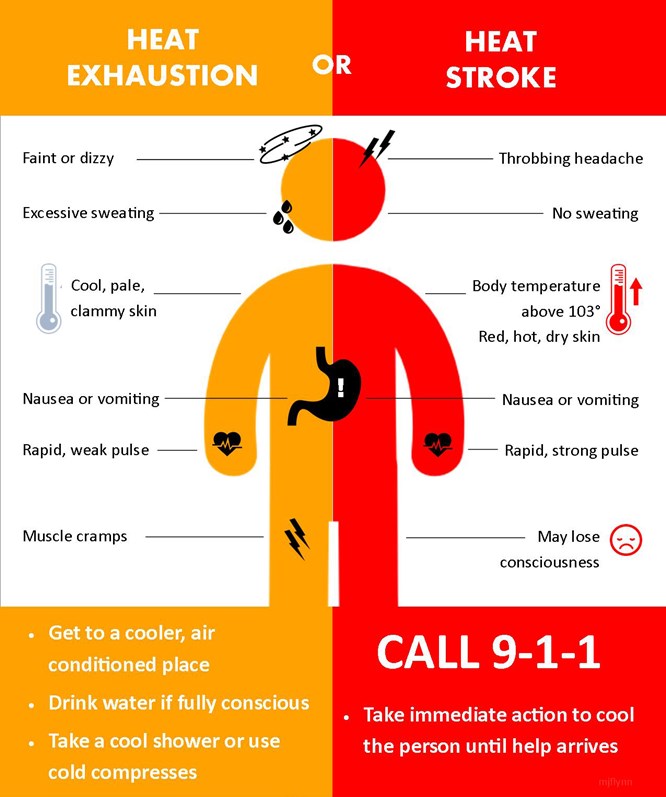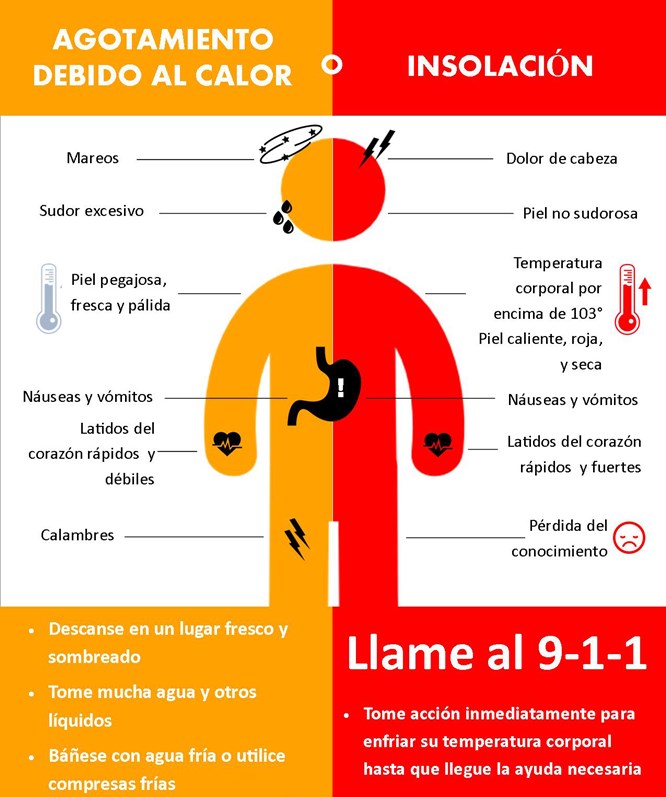
HEAT AWARENESS & SAFETY
Each year, more than 200 people have to be rescued while hiking in parks and preserves.
Park visitors should:
- You know your limits, as well as those with you. Make an informed decision on which trail to recreate on, and your trek will be more enjoyable.
- During the warmer months, recreate during the early/later hours when temperatures are slightly cooler.
- Wear appropriate footwear, clothing, eye protection and sunscreen for your trek.
- Begin hydrating BEFORE you recreate, and rehydrate frequently throughout your exercise routine.
- Stay on designated trails.
- Tell someone where you are recreating and when you expect to return.
- Carry enough water for your entire workout. And, remember to bring plenty of water for your children and canine friends.
- When your water is half gone, turn around and return to the trailhead.
- Carry a cell phone.
- Don't hike alone.
- Use maps, know where you are going and what kind of terrain you are hiking on.
Additional information is available on the National Weather Service website.
 HEAT EXHAUSTION VS. HEAT STROKE HEAT EXHAUSTION VS. HEAT STROKE
|
| Do you know the difference between heat exhaustion and heat stroke? |
|
HEAT EXHAUSTION
Heat exhaustion is a milder form of heat-related illness that can develop after several days of exposure to high temperatures and inadequate or unbalanced replacement of fluids. Those most prone to heat exhaustion are elderly people, those with high blood pressure, and those working or exercising in a hot environment.
- Faint or dizzy
- Excessive sweating
- Cool, pale, clammy skin
- Nausea or vomiting
- Rapid, weak pulse
- Muscle cramps
WHAT SHOULD YOU DO?
- Get to a cooler, air conditioned place
- Drink water, if fully conscious
- Take a cool shower or use cold compresses
|
HEAT STROKE
Heat stroke is the most serious heat-related illness. It occurs when the body becomes unable to control its temperature. The body's temperature rises rapidly, the sweating mechanism fails, and the body is unable to cool down. Body temperature may rise to 106°F or higher within 10 to 15 minutes. Heat stroke can cause death or permanent disability if emergency treatment is not provided.
- Throbbing headache
- No sweating
- Body temperature above 103°F
- Red, hot, dry skin
- Nausea or vomiting
- Rapid, strong pulse
- May lose consciousness
WHAT SHOULD YOU DO?
- CALL 9-1-1!!!
- Take immediate action to cool the person until help arrives.
|
|

English version
|

Spanish version
|
| Source: Maricopa County Public Health Dept. |
|
 MONSOON AWARENESS MONSOON AWARENESS
|
|
DURING MONSOON SEASON:
|
SAFETY TIPS FOR LIGHTNING STORMS: |
- Stay out of areas that are subject to flooding and move to a safe area before access is cut off by flood waters. Low spots such as dips, canyons, and washes are not the places you want to be during flooding!
- Do not plan a long hike in an open area during inclement weather. This leaves you open to the elements, and could put you in danger.
- Do not camp or park your vehicle along creeks or washes, potential rising waters could trap you.
- Always continue to monitor the situation through local and national media and weather stations.
- If advised to evacuate quickly, do so immediately! Act quickly to save yourself, you may not have much time.
- It is advisable that someone, not necessarily with you, know you plan for the day, especially if you're hiking alone. Call a friend, let them know your planned route in the event you do not return on time.
Source: Adapted from the National Oceanic and Atmospheric Administration
|
- Before you hike, check the weather forecast. Arrange activities to minimize your exposure to lightning danger.
- Be aware of the nearest safe structure or vehicle and how long it will take to reach it.
- Listen for thunder, watch for lightning, and observe the direction of storm movement.
- Be alert of possible flash floods or falling rocks during or after storms.
- If you find yourself in a dangerous situation with a thunderstorm approaching, take cover.
- If camping, wait out the storm in a safe structure or vehicle, not a tent.
- Do not touch any metal on vehicles or structures.
Source: Adapted from the National Park Service
|
 CURRENT WEATHER & UV INDEX CONDITIONS CURRENT WEATHER & UV INDEX CONDITIONS
|
| The UV Index provides a forecast of the expected risk of overexposure to UV radiation from the sun. The National Weather Service calculates the UV Index forecast for most ZIP codes across the U.S., and EPA publishes this information. The UV Index is accompanied by recommendations for sun protection and is a useful tool for planning sun-safe outdoor activities. |
| English |
Spanish |
| PHOENIX WEATHER |
PHOENIX WEATHER |
|
|